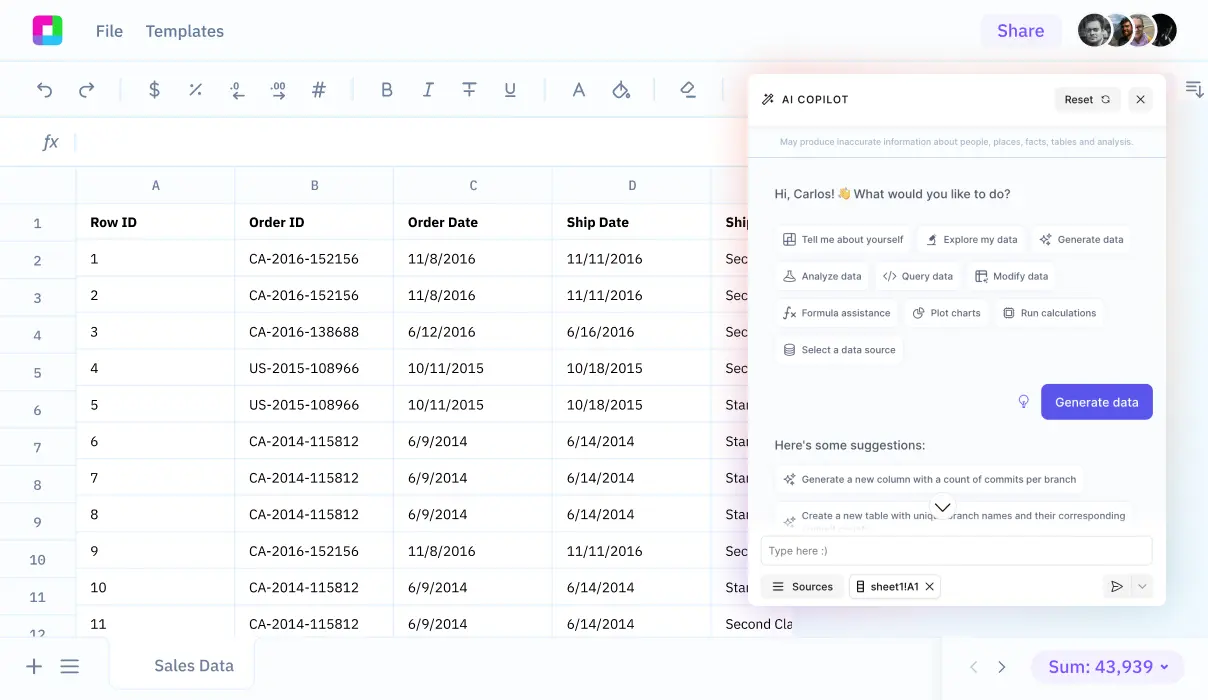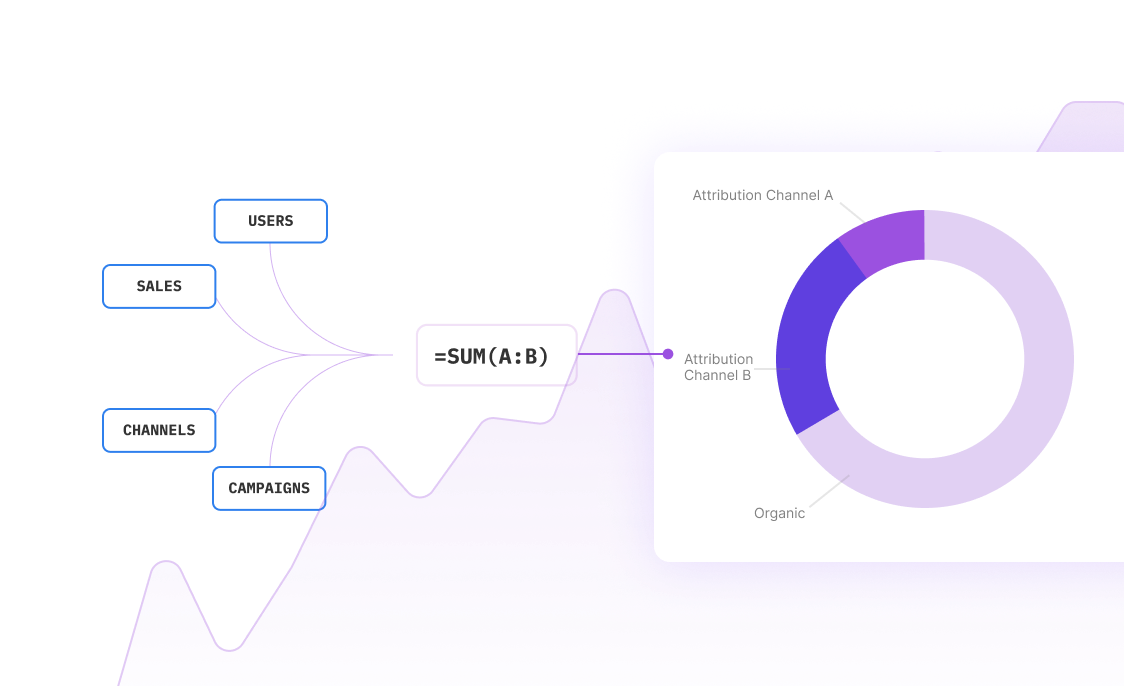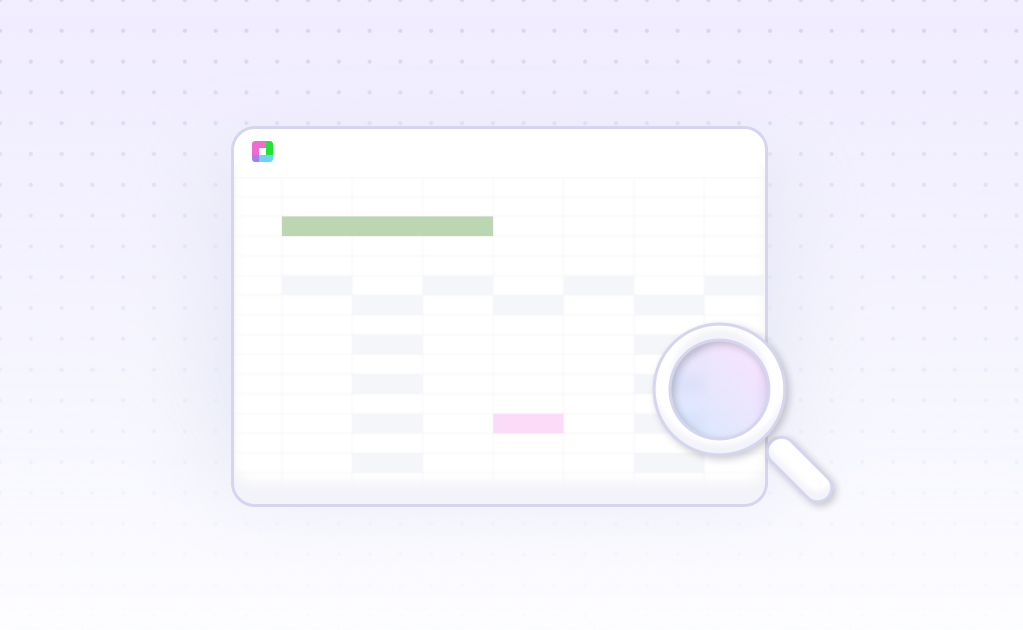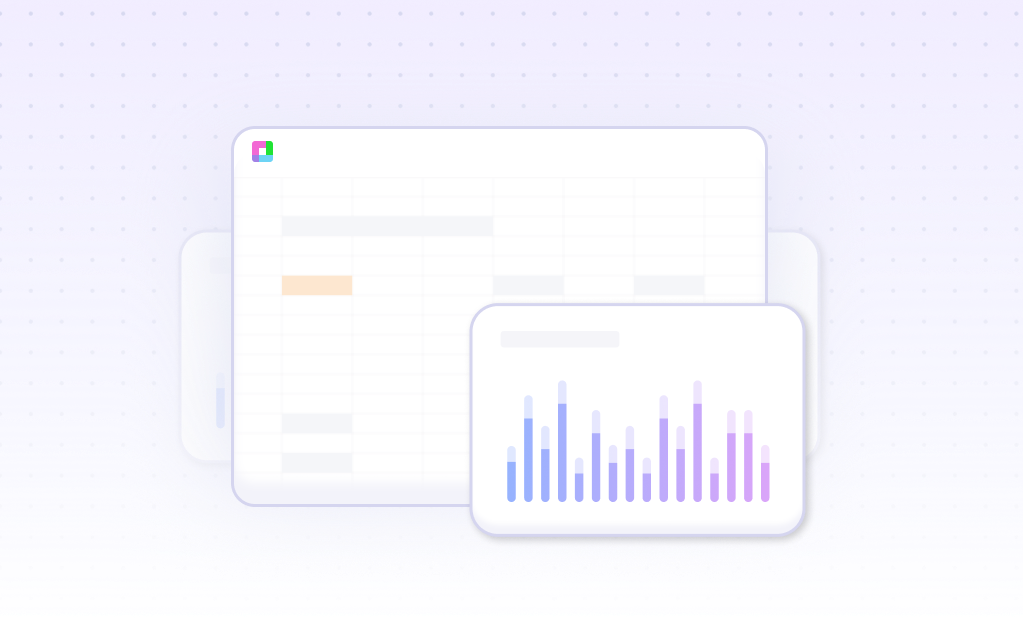
Introduction
Common size financial statement analysis, also known as vertical analysis, expresses each line item as a percentage of a base amount. This analysis works for balance sheets (using total assets as the base), income statements (using total revenues as the base), and cash flow statements. While Excel remains a standard tool for financial modeling, new AI-powered alternatives like Sourcetable are emerging.
Sourcetable combines Excel's functionality with AI automation, offering features like automated formula generation (including SUM and VLOOKUP), AI-driven chart creation, and advanced data analysis through SQL and Python integration. For those without Excel expertise, Sourcetable automates complex spreadsheet tasks and provides voice-driven data interaction capabilities.
Learn how to perform common size financial statement analysis using Sourcetable's AI-powered features at sourcetable.com/signup.
Why Sourcetable Is Superior for Common Size Financial Analysis
Excel's Data Table tool, while powerful for data sensitization, often creates headaches for users performing financial analysis. Sourcetable eliminates these pain points by combining Excel's functionality with advanced AI capabilities.
Natural Language Processing Advantage
Unlike Excel, which requires complex formulas, Sourcetable lets you analyze financial statements using natural language queries. This intuitive approach provides instant visual summaries of financial trends and patterns.
AI-Powered Benefits
Sourcetable's AI engine automates routine calculations while improving accuracy and speed. The platform enhances data analysis capabilities, strengthens compliance, and provides robust security and fraud protection features.
Streamlined Workflow
While Excel's Data Table requires manual setup and troubleshooting, Sourcetable transforms financial analysis into an automated, conversational process. Users can quickly generate visualizations, reports, and automated workflows through simple language commands.
Benefits of Common Size Financial Statement Analysis with Sourcetable
Advantages of Common Size Analysis
Common size balance sheets standardize financial data, making it easier to compare companies of different sizes within the same industry. This standardized format reveals clear patterns in a company's financial structure and helps identify potential areas of concern or opportunity. Companies can track their financial evolution over time and benchmark against industry averages.
Enhanced Analysis with Sourcetable
Sourcetable streamlines financial data integration and management, while providing access to open-source financial data for deeper analysis. The platform enables innovative financial modeling and integrates with popular tools like R and Python. This democratized access to financial data allows for more sophisticated analysis and better risk management.
Improved Decision Making
Common size analysis through Sourcetable provides investors and analysts with detailed insights for better investment decisions. The platform's large-scale data processing capabilities, combined with open-source financial data, enable advanced predictive modeling and foster collaborative research across the financial community.
Common Size Financial Statement Analysis with Sourcetable
Sourcetable enables efficient common size financial statement analysis through automated calculations and advanced filtering of large datasets. Companies can leverage Sourcetable's AI-powered features to compare their financial statements with competitors and track changes over time.
Balance Sheet Analysis
Perform common size analysis of balance sheets by automatically calculating each line item as a percentage of total assets. Sourcetable's real-time collaboration features allow teams to analyze these proportions together and generate detailed reports of the findings.
Income Statement Analysis
Calculate key profitability metrics by expressing income statement items as percentages of total revenue. Sourcetable automates the computation of net profit margin (Net Income / Total Revenue), gross margin (Gross Profit / Total Revenue), and operating margins (Operating Income / Total Revenue).
Trend Analysis
Track financial statement changes over time through Sourcetable's automated data management features. The platform's extensive reporting capabilities help identify significant shifts in financial ratios and performance metrics while minimizing human error in calculations.
Common Size Financial Statement Analysis Use Cases with Sourcetable AI
Multi-Company Industry Analysis |
Connect to databases containing competitor financial data. Use Sourcetable's AI to automatically normalize financial statements as percentages of revenue or total assets across multiple companies. Generate comparative visualizations with 3D plotting capabilities. |
Historical Performance Tracking |
Import historical CSV data and leverage cloud compute to quickly transform multiple years of financial statements into common size format where |
Competitor Strategy Analysis |
Sync with business applications to gather competitor financial data. Use AI-assisted analysis to compare expense structures and identify strategic differences in resource allocation across companies of varying sizes. |
Real-Time Financial Monitoring |
Connect live database feeds for continuous financial monitoring. Let Sourcetable AI automatically update common size calculations and alert analysts to meaningful changes in financial ratios and operational metrics. |
Frequently Asked Questions
What is common-size financial statement analysis?
Common-size financial statement analysis displays each line item as a percentage of a base figure, making it easier to analyze a company's performance over time and compare it to competitors. This analysis helps identify significant changes and trends that may not be apparent in raw financial statements.
What are the main benefits of common-size financial statement analysis?
Common-size financial statements enable easier comparison of a company's performance across different time periods, facilitate peer comparison, and help identify significant financial trends. The analysis evaluates financial strength, income utilization, and cash flow sources by comparing percentages between years.
How can Sourcetable help with common-size financial statement analysis?
Sourcetable is an AI-powered spreadsheet tool that automates complex financial analysis tasks, generates formulas, and creates charts. It integrates with multiple platforms and can be used for financial modeling and forecasting, while offering features like data cleaning, trend extraction, and pivot table generation.
Conclusion
Common size financial statement analysis in Excel requires a simple formula: line item/total, where the total is net sales for income statements and total assets for balance sheets. While Excel makes this analysis straightforward through formula copying, Sourcetable offers an AI-powered alternative that automates the entire process.
Sourcetable combines Excel's functionality with AI capabilities to streamline financial analysis. It automatically generates formulas, cleans data, and creates visualizations of common size statements. The platform's integration with SQL and Python enables advanced financial data analysis, while its voice-driven interface eliminates the need for manual formula creation.
Whether you're analyzing financial performance or identifying trends, Sourcetable's AI-driven approach simplifies common size analysis. Ready to transform your financial analysis workflow? Try Sourcetable today.
Recommended Analysis Guides
Connect your most-used data sources and tools to Sourcetable for seamless analysis.
Frequently Asked Questions
If you question is not covered here, you can contact our team.
Contact Us





